Zowie Review (2025): Key Features, Pricing & Insights
Zowie is an AI-first customer support automation platform built for ecommerce brands, offering robust ticket deflection, fast onboarding, and deep integrations, but comes with higher custom pricing and limited customization compared to horizontal chatbot tools.
What's covered:
- Core features, strengths, and pain points
- User reviews and average ratings by platform
- Pricing breakdown and how Zowie scales
- Key integrations, automation capabilities, and templates
- Comparison with Big Sur AI, Intercom, Zendesk, HubSpot
- Pros, cons, and best-fit use cases
What is Zowie?
Zowie is an AI-powered automation platform for customer support teams.
It detects, automates, and resolves repetitive customer service tickets so teams can focus on complex cases and higher-value interactions.
Zowie at a glance
Our verdict: 8.3/10
Zowie is built for ecommerce brands that need fast, automated support at scale. With strong integrations and revenue-focused workflows, it’s ideal for fast-growth teams handling high ticket volume.
However, its limited low-code flexibility, high pricing, and closed architecture make it less suited for startups or technical teams needing deep customization.
Big Sur AI is a strong alternative for broader control and adaptability.
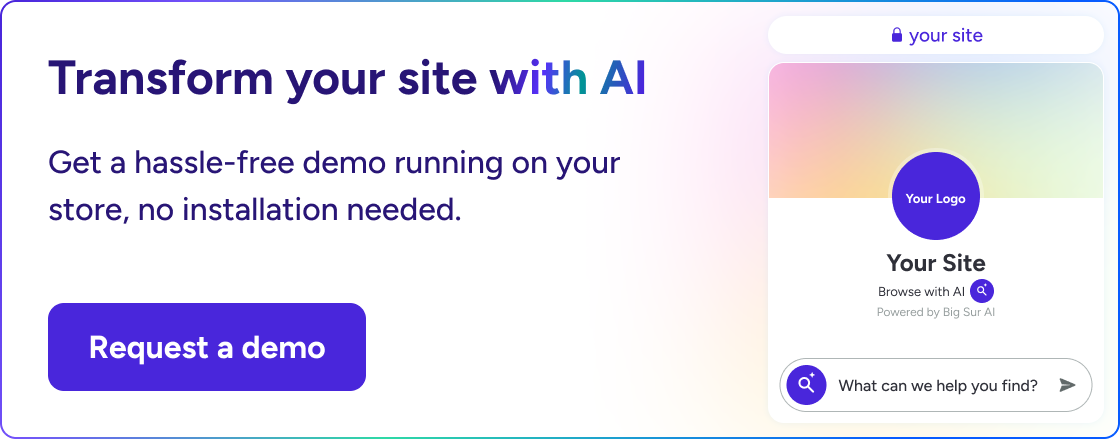
Average customer rating
G2: 4.7/5 (130+ reviews), often noted for workflow speed and ease of onboarding
Capterra: 4.8/5 (80+ reviews), top marks for automation and commerce tools, with some feedback about feature gaps
TrustRadius: 8.7/10 (25+ reviews), high for proactive automation, lower for advanced custom flow building
Shopify App Store: 4.9/5 (60+ reviews), with praise for incremental upsell and order status features
Gartner Peer Insights: Limited coverage, but highlights integration with Zendesk and Shopify
Reddit: Commonly discussed as an automation multiplier for midsize ecommerce, with some users requesting expanded reporting options
Best for
- Ideal use cases: Automating ecommerce customer support at scale; deflecting repetitive tickets (order status, refunds, returns, product questions); driving conversion with chat-based recommendations, and seamless handoff to human agents.
- Strengths: Out-of-the-box integration with platforms like Shopify, Magento, Zendesk, Gorgias, and Slack; pre-trained ecommerce flows; built-in conversion/retention tools; robust automation; live agent-automation switching.
Typical users
- DTC and retail e-commerce brands with high ticket volumes seeking reliable automation, revenue-driving chat, and pre-built integrations.
- Core personas: customer service leaders, CX managers, operations directors, ecommerce heads—in verticals like beauty, fashion, tech gadgets, supplements, and lifestyle.
Flagship customers
Trusted by thousands of B2C brands and online retailers, including giants like Steve Madden, OLX, Fielmann, Beam, and Ivory Ella.
Customer testimonials highlight significant resolution time drops and increase in agent productivity, especially during peak sales periods.
Pricing snapshot
| Plan | Price (monthly) | Key features |
|---|---|---|
| Essentials | $599+ | Ticket automation, 5 user seats, Shopify/Zendesk integration, 2000 automation credits |
| Automation Pro | Custom | Unlimited seats, advanced analytics, multi-store support, API access |
| Enterprise | Custom | Custom contracts, dedicated onboarding/support, advanced SLAs, tailored automation |
| Note: Transaction-based pricing model means usage and automation credits can affect monthly spend. Additional integrations, premium support, and advanced workflow builders are available as paid add-ons. | ||
Strengths & weaknesses
✔ Pros
- Industry-leading ecommerce automation, with plug-and-play workflows for order status, returns, shipping, and promos.
- Fast, simple onboarding—brands launch advanced automation in days.
- Highly rated Zendesk, Shopify, and Gorgias integration for seamless ticket sync.
- Tracks sales and reveals revenue impact directly from chat and self-serve flows.
✘ Cons
- Enterprise pricing can be a barrier for smaller brands or startups.
- Customization beyond e-commerce workflows is limited compared to horizontal chatbots.
- Some reviewers cite desire for richer custom reporting and more fine-grained control of fallback/handoff logic.
Notable capabilities
Zowie stands out for its ability to automate over 70 percent of chat tickets in real time on major ecommerce platforms, with deep integrations to order tracking, returns, and product catalogs.
Its automation-first approach enables rapid ROI, predictive ticket deflection, and revenue-generating chat flows.
How to use Zowie the smart way
Navigate to Zowie’s main dashboard to manage all your workspaces and integrations 👇
- Set up your primary knowledge base
Pull in data from help center articles, FAQs, and previous chat logs. Zowie’s bulk import tools make this step fast.
- Define automations that matter
Use Zowie’s “Automation Recipes” for common scenarios like order status or returns. Tweak the triggers and responses to match your workflows.
- Integrate with your existing stack
Connect Zowie to platforms like Zendesk, Shopify, or Intercom in minutes. Leverage these integrations to route conversations and sync customer history.
- Personalize with quick settings
Adjust your tone of voice, escalation rules, and fallback responses based on brand guidelines. Test changes instantly in the preview panel.
- Launch in your preferred channels
Activate Zowie on web chat, email, Facebook Messenger, or WhatsApp with one click. Use channel-specific settings for optimized hand-offs.
- Monitor performance and optimize
Track key metrics (automation rate, resolution time, CSAT) in the Analytics tab. Use the misfire report to pinpoint unhandled queries and update content.
How to get started: Steps
- Create your Zowie account at zowie.ai and choose a workspace.
- Import help content or connect to your existing knowledge base.
- Auto-apply popular Automation Recipes or create your own.
- Link Zowie with your support stack using built-in integrations.
- Refine agent instructions for handling edge cases or high-priority tickets.
- Test the experience in Zowie’s Conversation Simulator.
- Go live on your desired channels and monitor through real-time dashboards.
Tip: Start with your most repetitive, high-volume queries for the biggest impact. Analyze how Zowie performs, then expand to other use cases.
Zowie's most popular features?
Here are the five most popular Zowie features that users consistently praise, based on forum feedback and real reviews:
- Automated customer support flows: Zowie offers prebuilt automation modules for solving common e-commerce and retail inquiries, including order status, shipping updates, returns, and refunds. Teams can quickly customize these flows, reducing time spent on repetitive questions and improving first contact resolution rates.
- AI-driven ticket triage: Instead of simply labeling incoming conversations, Zowie’s platform auto-prioritizes and routes tickets to the right team or agent based on intent, complexity, and customer data. This ensures urgent issues reach humans faster and prevents backlogs in support queues.
- Self-optimizing knowledge base: Zowie dynamically updates its FAQs and knowledge hubs by tracking which answers work, where customers drop off, and which topics generate follow-ups. This continuous improvement loop leads to a highly relevant help center with less manual upkeep by support staff.

- Proactive customer engagement: Using predictive analytics, Zowie identifies opportunities to reach out to customers before they even ask for help, such as sending shipping updates, delay alerts, or personalized recommendations based on browsing behavior. This drives higher customer satisfaction and can boost conversion metrics.
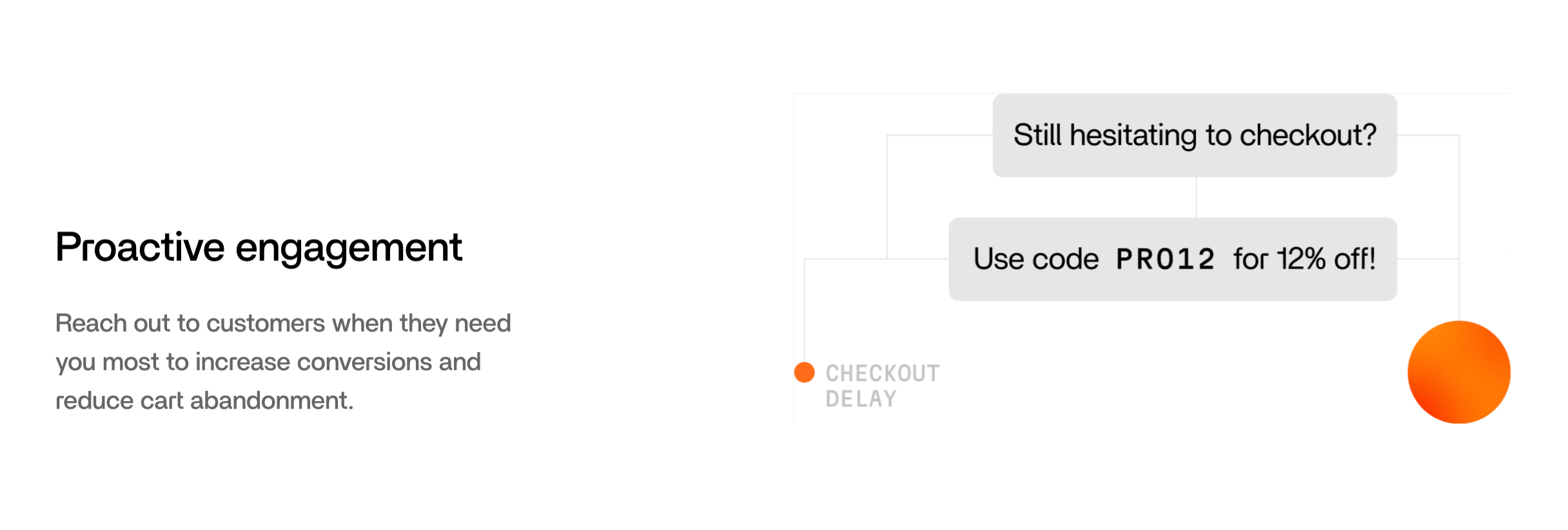
- Multi-channel orchestration: Zowie integrates across major chat and messaging platforms (including email, web chat, Messenger, WhatsApp, and more) from a single dashboard, enabling seamless, unified support experiences. Agents get a consolidated view of conversations, while customers can switch channels without losing context.
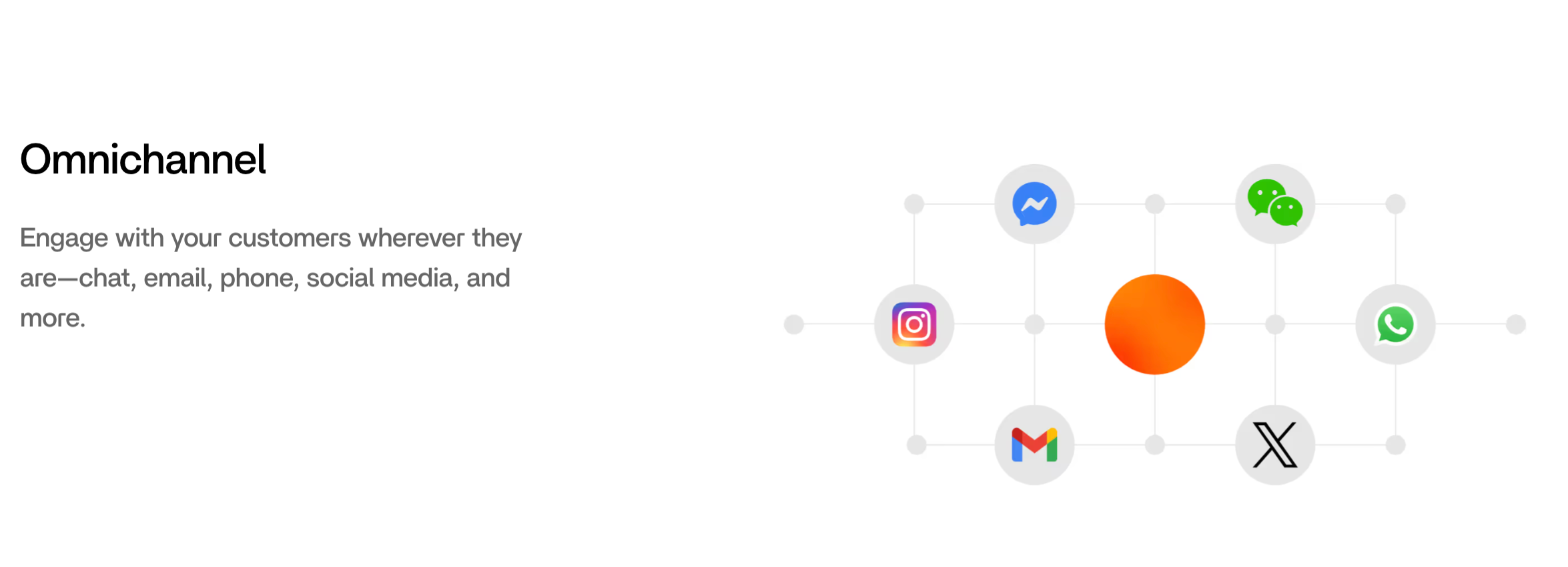
💡 TL;DR → If you care about rapid automation of support flows, proactive outreach, and robust multi-channel orchestration, Zowie is a great pick. If you value deep vertical customization or need features beyond e-commerce and retail use cases, maybe consider alternatives.
Zowie's customer reviews: The Good & the Bad
🎯 Overall Ratings
G2: 4.7 / 5 (150+ reviews), praised for smart automations but mixed on onboarding experience
Capterra: 4.8 / 5 (45+ reviews), high marks for efficiency gains and ease of integration
Trustpilot: No dedicated profile, but Zowie is discussed in several SaaS customer support forums—generally regarded as effective, but not perfect
Reddit & Social Channels: Users on r/SaaS and LinkedIn posts highlight specialized AI functionality, with some caveats regarding deep customization
👍 The good
Advanced intent detection even for niche industries
Customers emphasize that Zowie accurately discerns intent in customer interactions, even in verticals with specialized terminology.
As one G2 reviewer wrote:
“We implemented Zowie for our B2B hardware platform. Our customers use extremely technical language and acronyms, but Zowie almost always ‘gets’ what they mean and generates contextually relevant replies.”
Playbook flexibility for evolving workflows
Users value the flexible automation workflows, particularly the ability to build decision trees for complex escalation triggers. A Capterra user noted:
“The rule-based playbooks are so easy to tweak, even mid-campaign, if our team sees a spike in some issue, much more nimble than our last provider.”
Seamless handoff between AI and agents
Several support teams comment on how Zowie’s live handoff feature ensures customer queries move smoothly from bot to human agent with full conversation context. One G2 review says:
“Our agents get transcript highlights and recommended responses right in their dashboard when the AI hands off a ticket—cuts our resolution time even if a human has to step in.”
Self-service knowledge base improvements
Zowie is credited for its continuous self-updating of the knowledge base as customer queries evolve. Statement from a Reddit discussion:
“It’s wild how Zowie mines tickets for new patterns and auto-suggests KB articles to address them. We had articles drafted for emerging FAQs before our own team flagged them.”
👎 The bad
Onboarding and training overhead
Some users note Zowie needs a considerable initial configuration to reach top accuracy, especially with domain-specific data. A Capterra review reports:
“Getting Zowie up to speed for our industry meant several weeks of data tweaking and sessions with their solutions architects—not exactly plug-and-play.”
Limited multi-language nuance
While Zowie supports multiple languages, customers say it lacks deeper localization for certain regions or dialects. One comment on G2:
“Spanish and German work fine, but the chatbot struggles with Austria-specific idioms and informal phrases.”
Analytics dashboard lacks custom filtering
Support leads note that Zowie’s analytics dashboard is helpful but currently doesn’t enable advanced filtering or report exports. Feedback from a Reddit thread:
“The dashboard gives us basics—ticket counts, time to resolve—but we can’t slice by customer segment or export raw data. Analytics is still a work in progress.”
Pricing for advanced workflows
Several SaaS leaders mention Zowie’s more powerful playbooks and API integrations are gated behind premium plans, leading to surprise costs. G2 user states:
“We saw big efficiency gains, but the automation we scripted needed the top-tier plan—cost was about 30% above what sales initially quoted.”
Pricing: How much does Zowie cost?
Zowie custom-prices its AI customer service automation platform based on business needs, typically factoring in ticket volume and feature requirements.
Choose between these 2 plans:
- Growth plan – custom pricing, includes chat and email automation, integrations (Zendesk, Intercom, Shopify, Salesforce), self-service automation, and personalized onboarding.
- Enterprise plan – custom pricing, includes all Growth features plus advanced analytics, multi-brand support, premium security/compliance, and dedicated customer success.
Price limitations & potential surprises
- Both plans require contacting sales for a quote; Zowie does not publicly list prices or include a set number of seats or conversations by default.
- Pricing can increase noticeably with higher agent counts, usage spikes, premium integrations, or enterprise feature add-ons.
Add-ons?
Zowie’s site does not list specific optional add-ons or corresponding prices publicly; all upgrades and advanced features are bundled into the custom quote you receive after a discovery call.
💡 Bottom line: All Zowie pricing and potential add-ons are handled through custom quotes tailored to your support volume and needs, so you’ll need to contact their sales team for accurate cost details.
Zowie vs competitors: Workflows, automation & integrations
Visual workflow builder enables branching logic without code
Zowie uses a drag-and-drop visual editor to build complex, multi-step workflows. Users can set triggers, define conditional paths, and automate repetitive queries, like refund processing or account changes, without scripting.
Native automation for ticket management and intent resolutions
Automatically closes, escalates, or routes tickets based on customer intent and context. Integrations with external CRMs and help desk tools allow actions like updating cases, pulling order data, or tagging tickets within automated workflows.
Prebuilt and custom integrations with e-commerce and support platforms
Zowie connects out of the box with Zendesk, Shopify, Salesforce, Gorgias, Magento, and Slack. Provides API connectors and webhook support for custom backend system integration, real-time product info retrieval, or syncing inventory and shipment status.
Trigger-based automation to deflect and personalize responses
Business rules let you trigger automations based on time of day, customer profile, or sentiment, such as auto-initiating discount offers for at-risk customers or prioritizing high-value order issues.
💡 TL;DR → If you care about robust, no-code workflow automation tailored to e-commerce and fast integrations, Zowie is a great pick. If you value hyper-custom logic or want a ready-to-deploy, multi-channel agent, consider Big Sur AI (https://bigsur.ai/) or platforms like Ada.
Is Zowie scalable?
Zowie is positioned as an automation layer for customer support, targeting teams that need robust AI-powered handling of high chat volumes. Its scalability shows up differently on the pricing and technical sides.
Pricing structure can get complex
Zowie’s pricing isn't published transparently and is often customized after a sales call. Instead of clear per-message or per-seat costs, enterprise deals include modules like automation percentage, agent seats, and volume. Mid-market reviews note increased costs as chat volumes rise, and extra charges for multi-channel support, integrations, or adding languages.
If your support load suddenly spikes, costs for automation can scale up quickly. This model means you'll need close cost projections and regular contract reviews, especially if ticket volumes are unpredictable.
Technical scaling is strong, with caveats
Zowie’s infrastructure is built for enterprises handling thousands of concurrent sessions. API rate limits are generous and the platform is built on Google Cloud, minimizing slowdowns during traffic surges. Integration with existing CRMs and helpdesks is stable during scale-ups.
However, users running multinational support with complex flows still report lag with real-time dashboards and AI handover for edge cases. Complex automation logic can slow response times under high load, so review workflows to avoid roundabout triggers.
Does Zowie offer templates to get going quickly?
Short answer: Yes, but with a twist.
Zowie accelerates setup by offering ready-to-use “skills”—modular AI workflows that act as templates for common support scenarios. These aren’t just blank forms; they come pre-built based on actual conversational data from ecommerce and support teams, covering order tracking, refund requests, policy answers, and more.
What Zowie provides to get started faster
Zowie’s approach includes:
- A template library with dozens of ecommerce-focused workflows
- Skill marketplace for community-created and Zowie-verified modules
- Quick configuration using best-practice workflows instead of building from scratch
- Industry targeting is baked into the onboarding, allowing you to select and deploy personalized flows for specific verticals (fashion, beauty, electronics, etc.)
- You can further customize and chain templates together, but the out-of-the-box flows are both practical and production-ready.
What’s the best alternative to Zowie?
| Tool | Best For | Key Strength | Drawbacks | Pricing |
|---|---|---|---|---|
| Big Sur AI | Fast, accurate AI customer support automation out of the box | Instant deployment, high-quality pre-built agents, deep integrations | Less customizable for niche, highly-specific workflows | Custom pricing, affordable for most scale-ups |
| Intercom Fin AI | Large SaaS teams needing unified support + engagement | All-in-one platform with native AI and existing CRM/marketing tools | Can get expensive, complex for lean teams | Starts at $74/mo/seat, plus add-ons |
| Zendesk AI | Companies already using Zendesk suite | Seamless integration with ticketing, knowledge base, analytics | Heaviest on enterprise features, less agile for rapid prototyping | AI add-on starts ~$50/mo, base plans extra |
| HubSpot Chatbot | Marketing & sales teams needing automation in CRM workflows | Multichannel support, deep CRM/marketing automation | Limited advanced AI features compared to specialized tools | Included with Service Hub from $50/mo |
Summary of Alternatives:
- If you care about lightning-fast setup, minimal integration work, and enterprise-grade AI right out of the box, choose Big Sur AI. It’s ideal if you want to automate support quickly and focus on scaling.
- If you already use Intercom for engagement or want a true all-in-one platform (CRM, marketing, support), Intercom Fin AI is your best bet—though it’s pricier for small teams.
- If your workflows are built around Zendesk and you need tight ticketing or multi-channel integration, Zendesk AI delivers the deepest native experience.
- Need marketing and sales automation as well as helpdesk chat? HubSpot Chatbot integrates directly with CRM and funnel tools, perfect if you want support woven right into your customer journey.
✅ Best “Ready-Made” Alternative: Big Sur AI
If you’re seeking the top turnkey, production-ready chatbot to deploy quickly and reliably, Big Sur AI stands out as the leading alternative to Zowie.
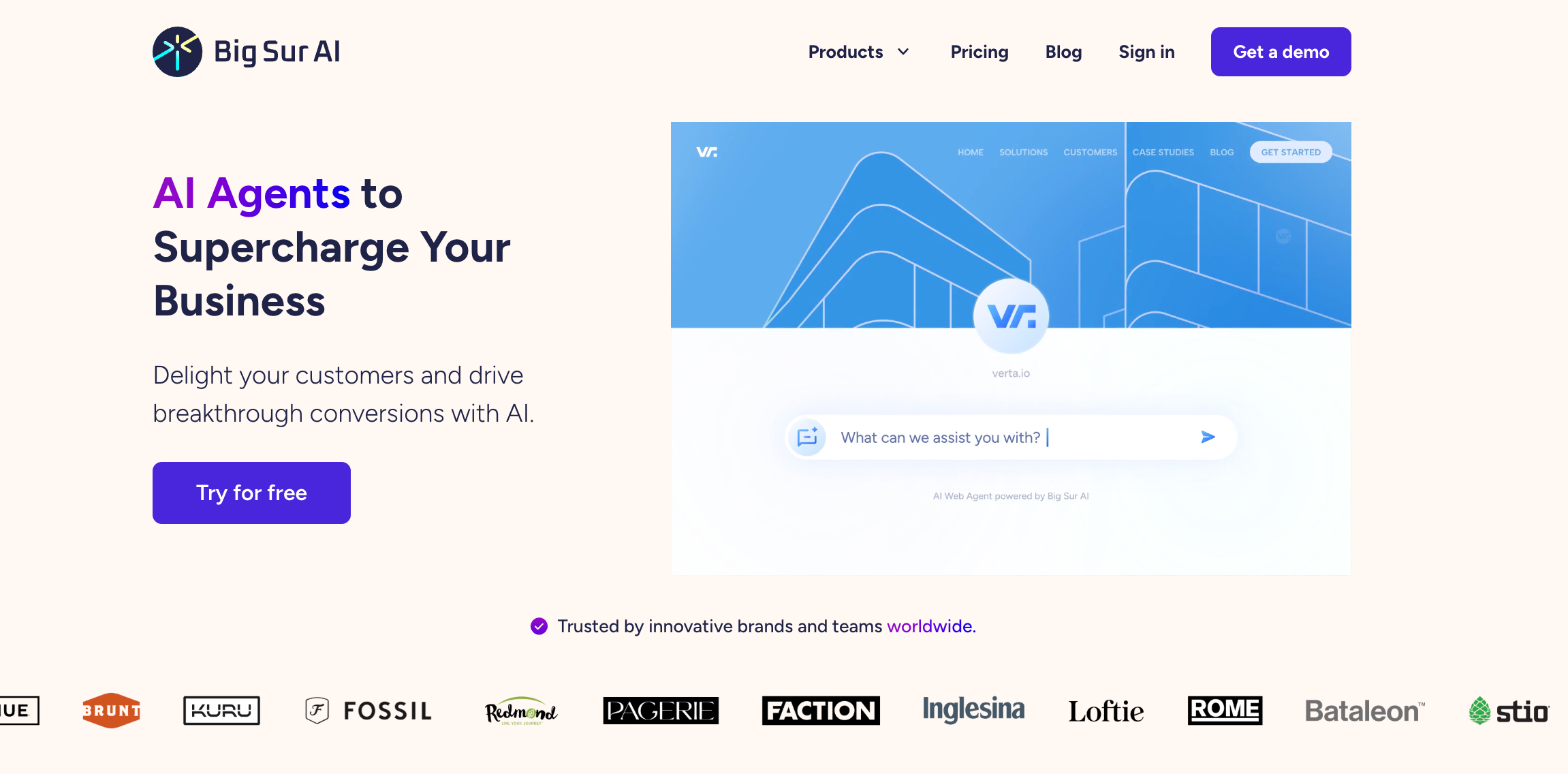
Why?
Big Sur AI is purpose-built for businesses that demand a high-performance, no-code chatbot with effortless setup and a superior user experience.
Unlike Zowie, which often requires extensive configuration and ongoing fine-tuning, Big Sur AI is engineered to deliver immediate value right out of the box.
Here’s what makes it stand out:
- Pre-trained, highly optimized conversational AI that handles sophisticated queries—no laborious manual training needed.
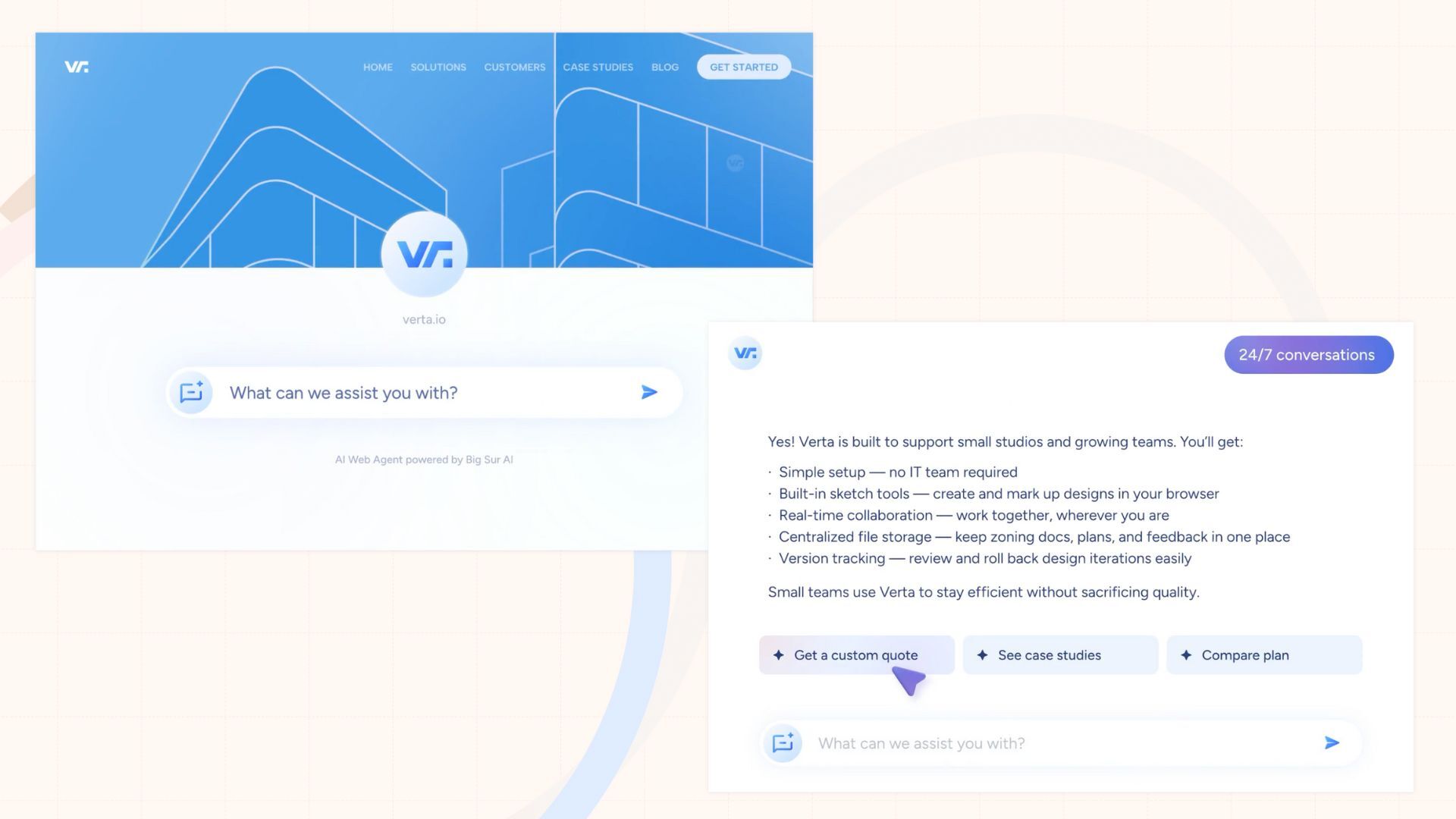
- Attractive, fully customizable chat widget embeds seamlessly on any site, adapting to your brand style.
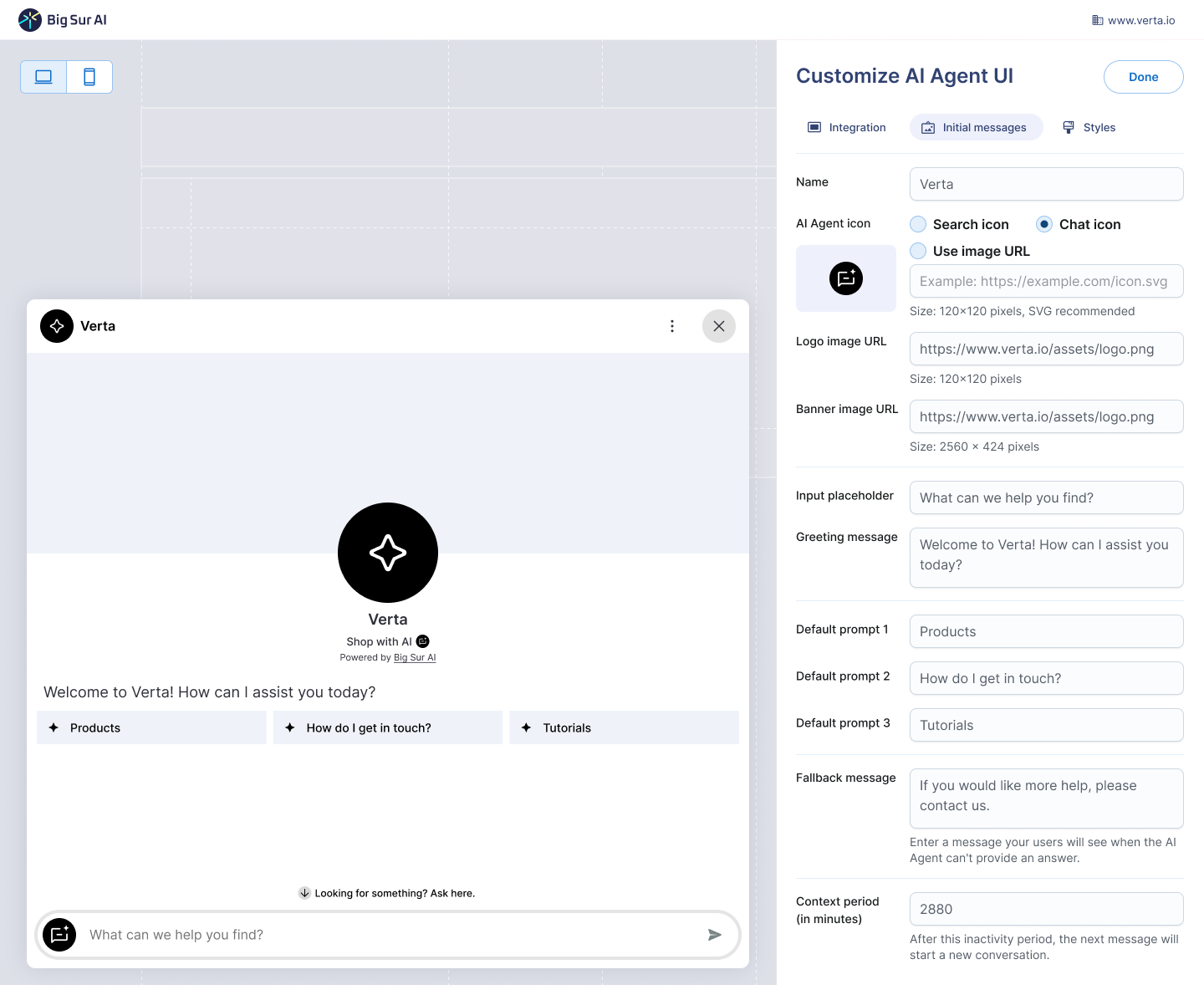
- Powerful performance with LLM-driven search, smart recommendations, and even automated content creation (far beyond just FAQ responses).
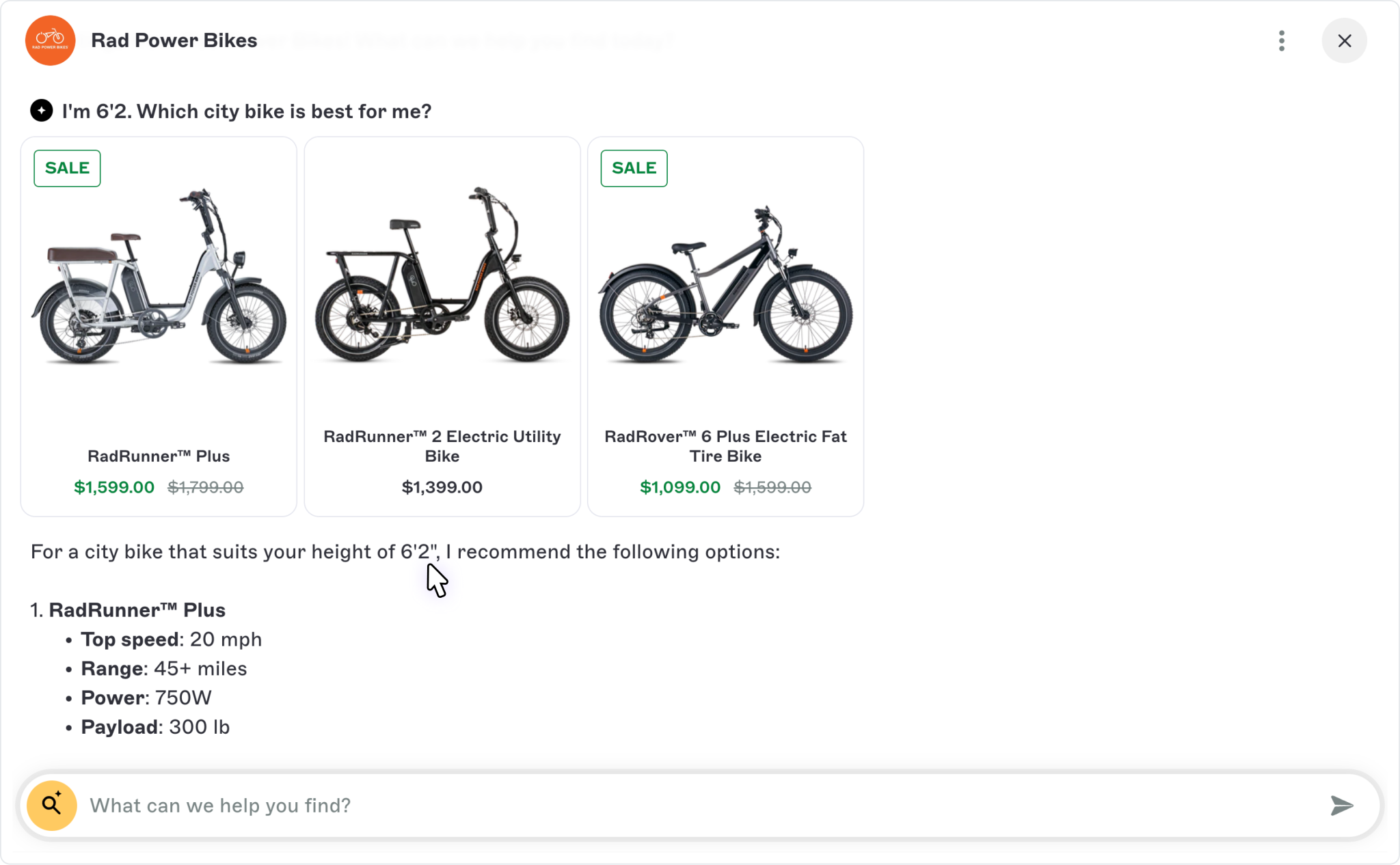
- Integrated lead capture and routing tools to automate turning visitors into qualified leads.
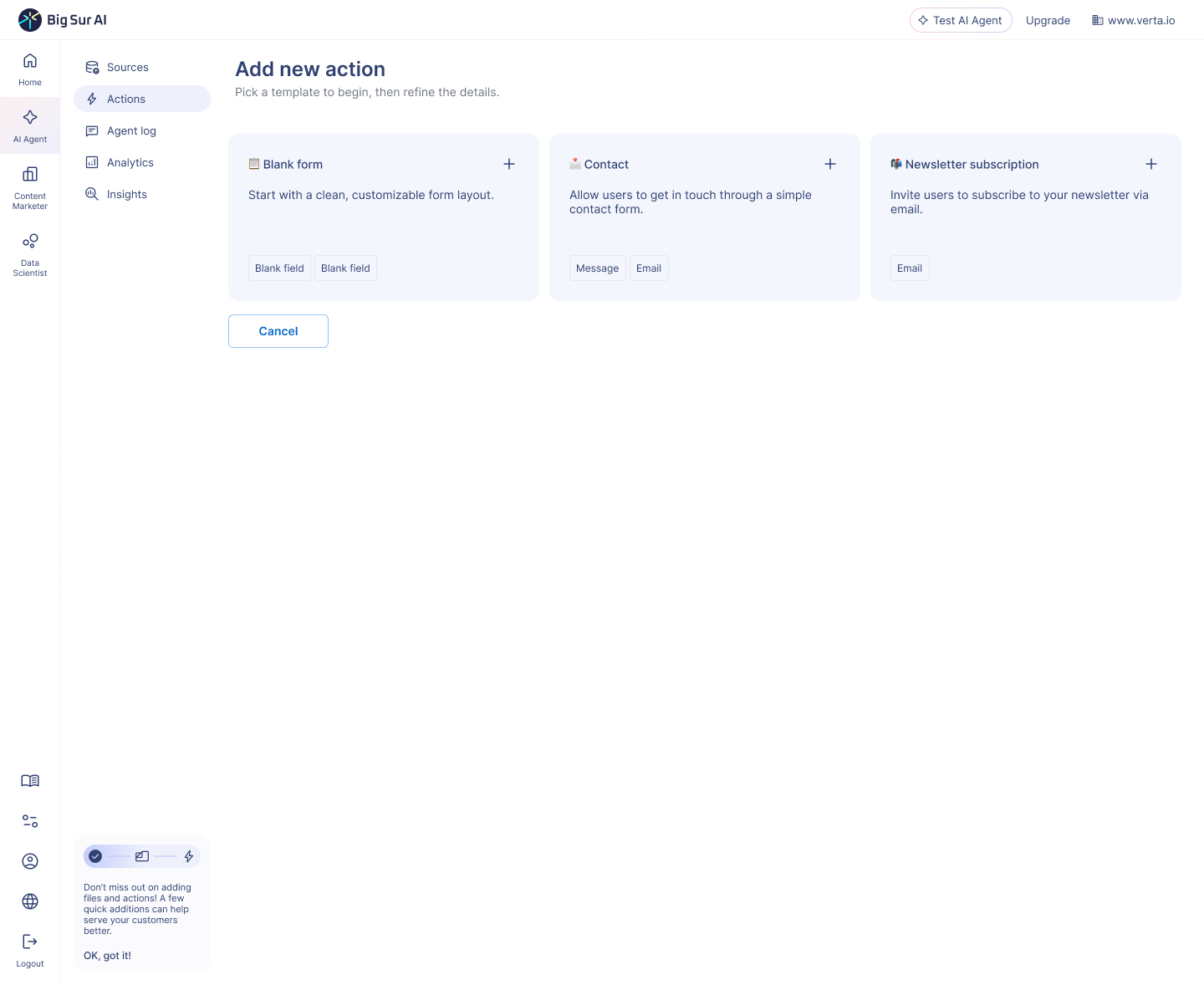
- Frictionless integrations with CRM platforms, Zapier, and simple webhook support.

Next steps: Deploy your own AI chatbot in minutes
Here’s how you can deploy a fully-trained, customizable AI chatbot on your website in under 10 minutes with Big Sur AI 👇
- Sign up on Big Sur AI's Hub (link here).
- Enter your website URL. Big Sur AI will automatically analyze your site content.
- Customize your AI agent. Set up specific AI actions and decide where the AI agent will appear on your site.
- Launch and monitor. Your AI agent will be live in minutes, and you can track performance with real-time analytics.

